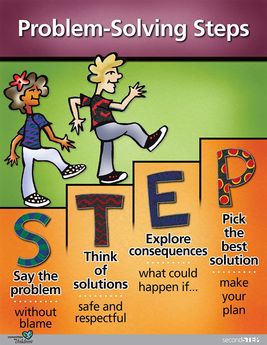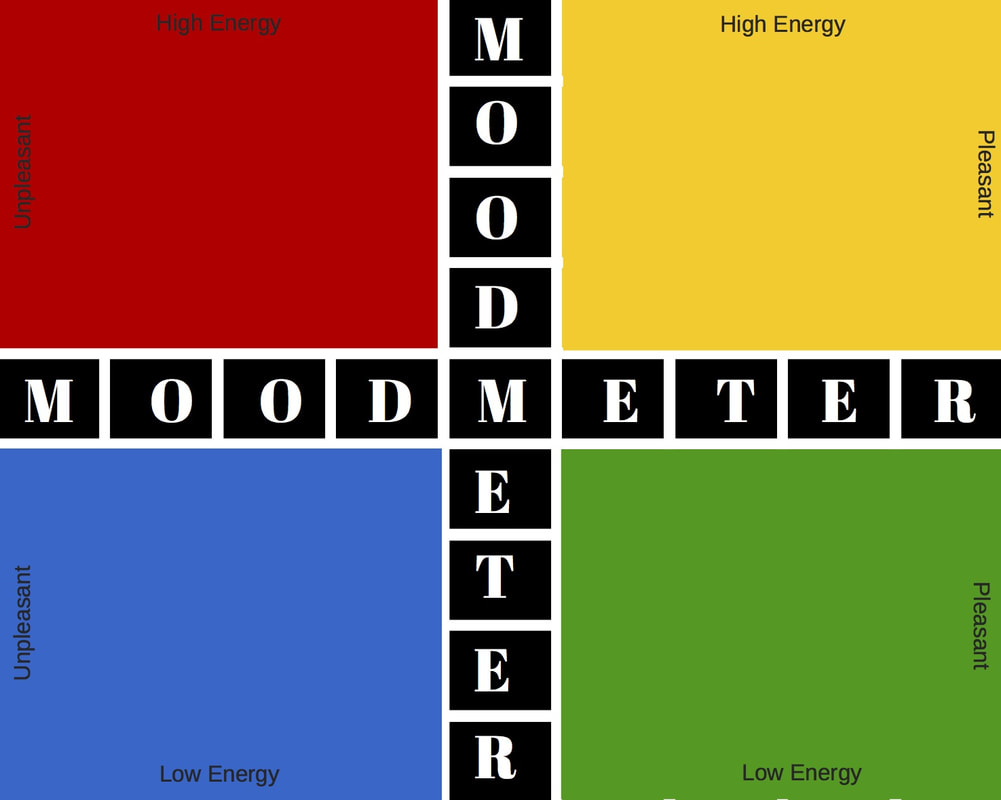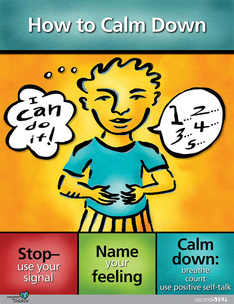|
Ms. Ashorn visited 3rd-5th grade classes in October to learn about recognizing strong feelings and how to effectively manage those emotions. This lesson actually follows up on our SEL Lesson from October 2016, which can be viewed here. Using the hand model of the brain, students reviewed/learned how their brain works when they are feeling strong emotions, which we call "flipping our lid". We used an analogy of the upstairs and downstairs brain. The upstairs brain is responsible for thinking, planning, creativity and problem solving. While the downstairs brain, also known as our "animal brain", controls our reactions and impulses (fight, flight or freeze) to strong emotions (like anger and fear). Next we read Steps and Stones: An Anh's Anger Story, which is the sequel to the book we read last year. In the Anh’s friends decide to play a different game at recess and he feels left out. Just as in the first book, Anh's Anger, a red hairy creature, shows up when something doesn't go Anh's way. But together they learn and use strategies that can help them calm down.
Last, students learned a new calm down strategy for their tool box called Finger Touch Focus. Ask your student to show you this tool at home.
0 Comments
During September SEL lessons, Ms. Ashorn visited Kinder through 2nd grade classroom to discuss the No Place for Hate program at BCE this year. To become a No Place for Hate recognized school, all students must sign the Resolution of Respect. We read and discussed this respect agreement prior to reading the book One by Kathryn Otoshi. Students also reviewed/ learned how to use the Mood Meter to identify feelings based on the energy level and pleasantness/ comfort of the feeling.
One tells the story of Blue, who is a quiet color. Blue gets picked on by Red, who is a bit of hot head. The other colors really like Blue and they don't like what they see, but they don't know how to help Blue. Then, One comes along and shows all the colors how to stand up, stand together, and count. The book illustrates accepting each other's differences and how it sometimes just takes one voice to make everyone count. During the reading, students discussed and shared how the Resolution of Respect could have helped the characters feel safe and happy. After reading the book and reviewing the promises in Resolution of Respect, all students signed their class' respect contract. Students in Kinder and 1st learned how to be a Social Detective this month. We read the book You are a Social Detective! by Michelle Garcia Winner. Students learned how we each have unique "smarts" but everyone has social smarts. We use our social smarts to figure out what behavior is expected in the different places we play, learn and go. We also learned that people around us have different thoughts and feelings about our behaviors. Our behaviors can cause some to move to a different place on the Mood Meter. Students learned to use their eyes, ear and brains to figure out what is expected. Ask your child to explore expected and unexpected behaviors with you and where that may put someone on the Mood Meter. This is how you can practice being a Social Detective and using your social smarts!
For February, we focused on the challenging task of being honest without hurting someone's feelings. We began with a discussion about what is honesty and the importance of it. Then, we read the book Being Frank (check it out below) which tells the story a little boy who struggles with being a little too honest. This creative and clever book teaches kids to always stay honest, but to use their social detective skills to be mindful of how their feedback affects others. We discussed the difference between "feel good feedback" vs. "constructive crisiticism". At the end of the lesson, students had an opportunity to role play practice giving the two different types of feedback.
*Please note that 5th graders have a modified schedule and will be receiving the December lesson on the Meta Moment and Growth Mindset.  During January, students learned another tool to use for problem solving. It connects well with our lessons on Dealing with Anger/ Flipped Lid and taking a Meta Moment. Students in K-1 read The Grouchies while students in 2-4 read What Do You Do with a Problem? Next, we discussed the 4 step process to solving a problem. We focused heavily on how to say the problem without blame as well as exploring which consequences are best for both parties. Last, we watched a video from the Second Step curriculum that shows the STEP process in action. * Due to a modified schedule for 5th grade, please note they did the November lesson on Empathy.
Parents, Please see the attached file for ways to continue the discussion at home.

Our November lesson is on social awareness and building empathy and compassion. We began by watching a fun Sesame Street video that defines Empathy (below). To further our students' understanding of empathy, we read a book and used the Mood Meter to identify how the characters were feeling. K-2nd: The Invisible Boy by Trudy Ludwig 3rd: The Invisible Boy, by Trudy Ludwig and follow up lesson with The Judgmental Flower, but Julia Cook 4th: Stand in My Shoes by Bob Sornson *5th Grade will receive October's Lesson on Emotion Regulation due to Live Oak If time allowed at the end of the lesson, students read scenarios and used their Empathy Detective skills to decide how the person would feel using the Mood Meter. Parents, please download the files below to continue a conversation about empathy and compassion at home.

During September SEL Lessons, Mrs. Coulter and Ms. Ashorn visited all classrooms to introduce Social Emotional Learning and the Mood Meter. The Mood Meter is a tool from the RULER Approach to SEL from the Yale Center for Emotional Intelligence. Watch the video below to learn more about the Mood Meter. Please ask your students to explain the Mood Meter and practice sharing their feelings at home using this tool.
|
AuthorsBCE Counselors Categories |
||||||||||||||||||||||||||||||||||









 RSS Feed
RSS Feed
